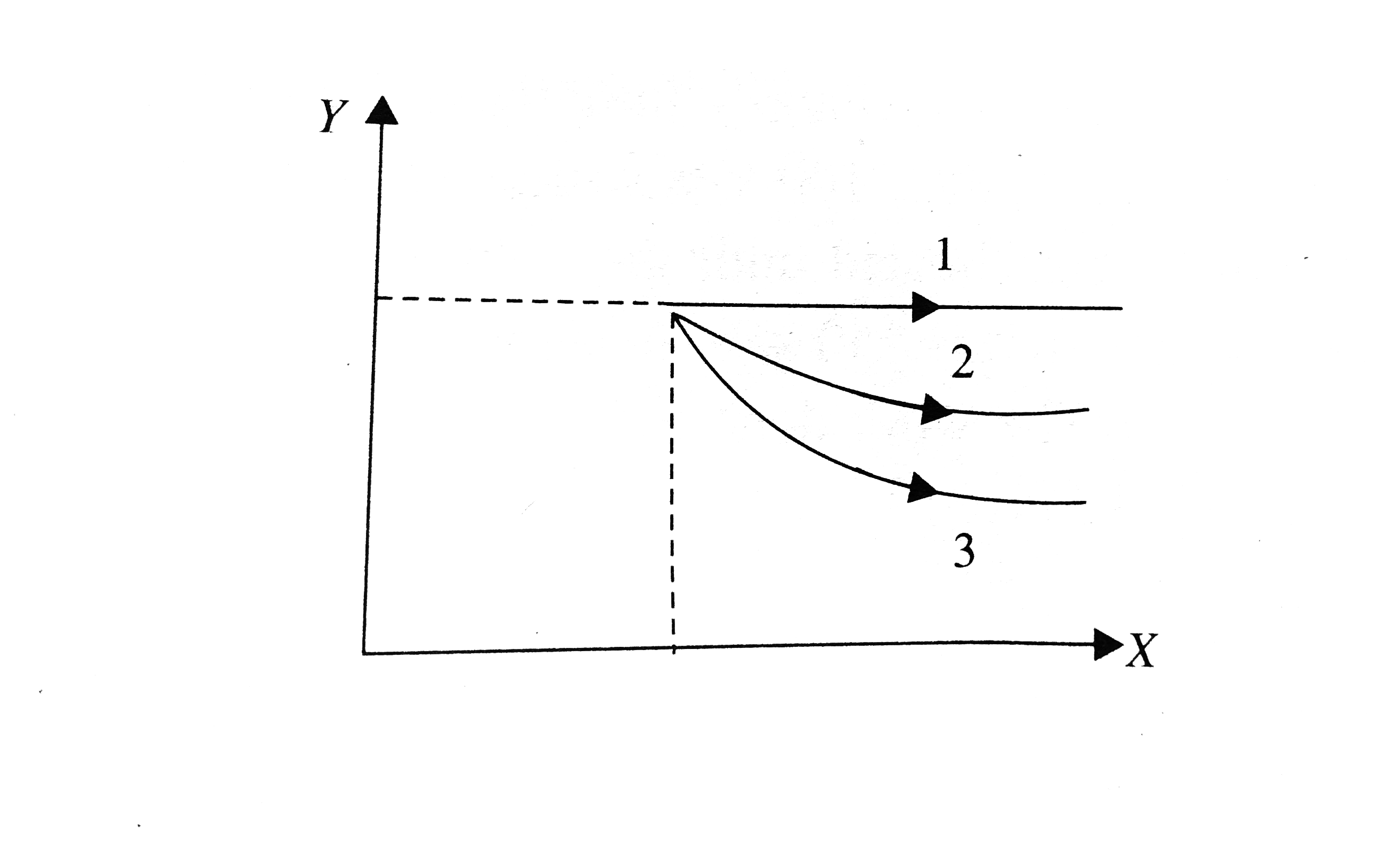For which of the process, ΔS is negative?
H2(g)→2H(g)
N2(g)(1atm)→N2(g)(8atm)
2SO3(g)→2SO2(g)+O2(g)
C(diamond)→C(graphite)
The correct Answer is:B
To determine for which process the change in entropy (ΔS) is negative, we need to analyze the randomness or disorder of the system in each case. A negative ΔS indicates a decrease in randomness.
1. Understanding Entropy (ΔS):
- Entropy is a measure of the disorder or randomness in a system. A positive ΔS indicates an increase in disorder, while a negative ΔS indicates a decrease in disorder.
2. Analyzing the First Process:
- Process: One molecule of hydrogen (H₂) splits into two atoms of hydrogen (2H).
- Analysis: The number of particles increases from 1 to 2, which leads to an increase in randomness.
- Conclusion: ΔS is positive.
3. Analyzing the Second Process:
- Process: Nitrogen gas (N₂) at 1 atmosphere pressure is compressed to 8 atmospheres.
- Analysis: Increasing pressure causes gas molecules to come closer together, reducing their kinetic energy and randomness.
- Conclusion: ΔS is negative.
4. Analyzing the Third Process:
- Process: Sulfur trioxide (SO₃) decomposes into sulfur dioxide (SO₂) and oxygen (O₂).
- Analysis: The number of molecules increases from 1 (SO₃) to 3 (SO₂ + O₂), leading to an increase in randomness.
- Conclusion: ΔS is positive.
5. Analyzing the Fourth Process:
- Process: Carbon in the diamond allotrope converts to graphite.
- Analysis: In diamond, carbon atoms are arranged in a tetrahedral structure, which is more ordered than the sheet-like structure of graphite. Thus, the randomness increases when converting from diamond to graphite.
- Conclusion: ΔS is positive.
6. Final Conclusion:
- Among the processes analyzed, only the second process (compression of nitrogen gas) results in a negative ΔS. Therefore, the answer is that ΔS is negative for the process where nitrogen gas is compressed from 1 atmosphere to 8 atmospheres.
- Entropy is a measure of the disorder or randomness in a system. A positive ΔS indicates an increase in disorder, while a negative ΔS indicates a decrease in disorder.
- Process: One molecule of hydrogen (H₂) splits into two atoms of hydrogen (2H).
- Analysis: The number of particles increases from 1 to 2, which leads to an increase in randomness.
- Conclusion: ΔS is positive.
- Process: Nitrogen gas (N₂) at 1 atmosphere pressure is compressed to 8 atmospheres.
- Analysis: Increasing pressure causes gas molecules to come closer together, reducing their kinetic energy and randomness.
- Conclusion: ΔS is negative.
- Process: Sulfur trioxide (SO₃) decomposes into sulfur dioxide (SO₂) and oxygen (O₂).
- Analysis: The number of molecules increases from 1 (SO₃) to 3 (SO₂ + O₂), leading to an increase in randomness.
- Conclusion: ΔS is positive.
- Process: Carbon in the diamond allotrope converts to graphite.
- Analysis: In diamond, carbon atoms are arranged in a tetrahedral structure, which is more ordered than the sheet-like structure of graphite. Thus, the randomness increases when converting from diamond to graphite.
- Conclusion: ΔS is positive.
- Among the processes analyzed, only the second process (compression of nitrogen gas) results in a negative ΔS. Therefore, the answer is that ΔS is negative for the process where nitrogen gas is compressed from 1 atmosphere to 8 atmospheres.
Similar Questions
For which of the following processes is ΔS negative?
View SolutionFor which of the following processes is ΔS negative?
View SolutionFor process 1, ΔU is positive, for process 2, ΔU is zero and for process 3, ΔU is negative. Find the parameters indicating x and y axes.

View SolutionFor which of these processes is the value of ΔS negative?
i. Sugar is dissolved in water.
ii. Steam condenses on a surface.
iii. CaCO3 is decomposed into CaO and CO2.
View SolutionWhich of the following process has negative value of ΔS ?
View SolutionIn which of the following changes, ΔH is always negative :
View SolutionIn which reaction(s), ΔS in negative?
View SolutionΔE=0 for which process
View SolutionFor an exothermic reaction to be spontaneous (ΔS = negative)
View SolutionDiscuss the effect of temperature on the spontaneity of a process when for the process both ΔHandΔS are negative.
View Solution
